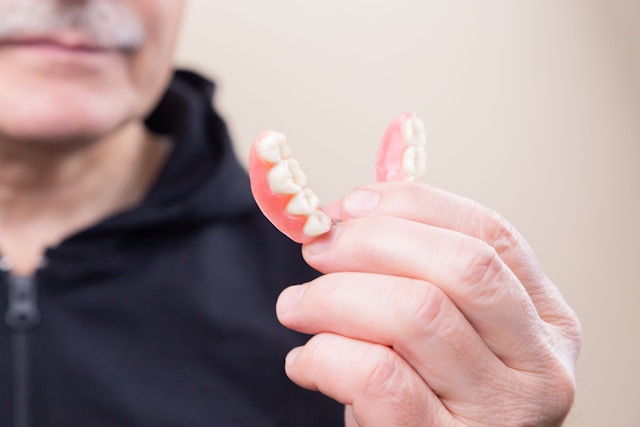
Surgery to remove the tonsils is known as a tonsillectomy, and it is frequently done on children to treat chronic tonsillitis, sleep apnea, and other conditions. Despite being extremely successful, some patients still worry about the potential for tonsil regrowth following surgery. “Can Tonsils Grow Back After Being Removed? – Tymoff” This article investigates the possibility of tonsils growing back, looks at the causes of recurrence, and provides information on possible treatments in the event that regrowth takes place.
Recognizing Tonsils and Their Function
The tonsils are two tissue pads, one on each side, that are situated in the back of the throat. They are a component of the lymphatic system, which is essential to the immune system’s function in the body. The tonsils serve as filters, capturing germs and viruses that enter the body through the nose and mouth. The tonsils are bigger and have a stronger immune system in children. But as we get older, their significance decreases.
Why Are The Tonsils Taken Out?
Recurrent tonsillitis is a disorder marked by recurrent throat infections; tonsillectomy is usually advised in this case. Tonsillitis can cause fever, swollen glands, earaches, sore throats, and difficulty swallowing. Removal becomes a feasible choice when tonsillitis progresses to a chronic state that significantly impairs quality of life and causes severe discomfort.
Obstructive sleep apnea is a prevalent indication for tonsillectomy as well. Breathing pauses and irregular sleep patterns result from the swollen tonsils obstructing the airway during sleep, a condition known as sleep disorder. Children who suffer from sleep apnea may exhibit behavioral issues, trouble concentrating, and daytime lethargy.
The Process of a Tonsillectomy
A tonsillectomy is a surgical treatment that is usually carried out while sedated. Tonsil removal can be done in a number of ways, each with possible drawbacks and benefits of its own. Dissection tonsillectomy is a typical technique in which the tonsil tissue is meticulously removed from the surrounding muscles by the surgeon. A different method is coblation tonsillectomy, which removes the tonsils with the least amount of bleeding possible using radiofrequency radiation.
The patient’s age, anatomy, and the cause for the tonsillectomy all influence the surgical technique that is chosen. The objective is to remove all tonsil tissue in order to stop regrowth, regardless of technique.
How Likely Is Tonsil Recurrence After Removal?
The good news is that following a tonsillectomy, tonsil regrowth is not very common. Research points to a 2% recurrence rate. This indicates that the tonsils are usually removed permanently and that the patient feels a great deal of relief from the initial symptoms.
Causes of Tonsil Regrowth
Although it is uncommon, there are a few reasons tonsil tissue may recover following surgery:
Incomplete removal: If little pockets of tonsil tissue are left in the surrounding tissues after surgery, they may eventually regenerate.
Epithelialization: The epithelium, or lining of the throat, may occasionally develop over the surgical site to resemble tonsil tissue. Though it may seem worrisome, this is not actual regrowth.
Tonsil Regrowth Symptoms and Indications
It can be difficult to distinguish tonsil regrowth from other throat problems. The following indications could point to tonsil regrowth: Can Tonsils Grow Back After Being Removed? – Tymoff
Chronic painful throat
Having trouble swallowing
recurring tonsillitis
a lump in the throat sensation
Following a period of improvement, snoring or sleep apnea may recur.
It is important to see your doctor for a clear diagnosis if you have any of these symptoms after a tonsillectomy. To confirm or rule out tonsil regrowth, they will conduct a physical examination and might suggest further testing such as imaging investigations or a throat swab.
Options for Recurrent Tonsil Tissue Treatment
The degree of your symptoms will determine your treatment options if your doctor confirms tonsil regrowth. Sometimes monitoring is all that is needed, particularly if the regrown tissue is little and not posing a major risk.
Nonetheless, a second tonsillectomy can be required if the regrowth is producing uncomfortable symptoms. The goal of this treatment, known as a revision tonsillectomy, is to remove any remaining tonsil tissue and stop future recurrence.
Consistency and Extended Advantages of Tonsillectomy
For the treatment of sleep apnea, chronic tonsillitis, and other related conditions, tonsillectomy is a safe and efficient technique. Tonsil regrowth is not common, but when it does happen, there are ways to cure it.
The majority of patients get long-term symptom reduction and an overall improvement in their quality of life following a tonsillectomy. The body can continue fight infection by using other lymphatic system components even after the tonsils are removed.
In summary / Can Tonsils Grow Back After Being Removed? – Tymoff /
A tonsillectomy is a successful treatment that reduces recurrent infections, minimizes discomfort, and efficiently treats a variety of throat-related issues. Although it is rare, ” Can Tonsils Grow Back After Being Removed? – Tymoff’ tonsil regrowth is possible. The greatest result is guaranteed if you discuss any post-operative issues with your doctor and heed their advice. This entails keeping up with follow-up appointments, using medication to properly manage pain, and practicing good dental hygiene to accelerate healing and reduce the likelihood of problems.






